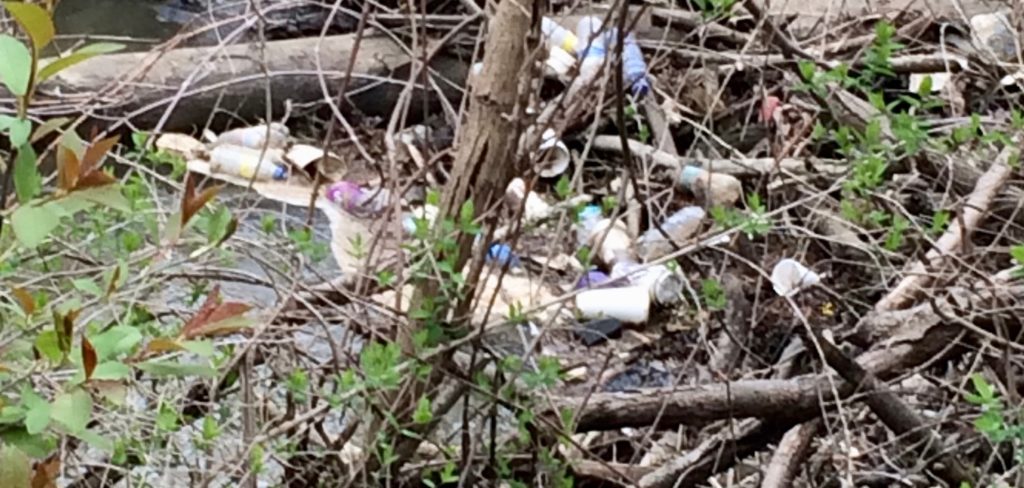
A clog of trash in Gilkey Creek on Brookside Drive between Linwood and Brookwood avenues (Photo by Jan Worth-Nelson)
By Jan Worth-Nelson
Gilkey Creek has been part of Joe Burroughs’ life ever since childhood. He used to play along it, and his father, George, used to fish in it, bringing home pan fish like crappies and blue gill.
Now Burroughs and his wife Kathryn, both retired school teachers, along with their Kensington Street neighbor Reba Walling, are trying to keep the winding little waterway near their homes open and healthy and as a beautiful as it can be.
“There are still fish in it,” Joe Burroughs said. “I was down there in my waders the other day and I saw some minnows –those are some pretty tough little guys if they can live in there.”
The Burroughs and Walling keep track of the mallard ducks who nest in the creek banks every spring. They’ve seen minks and there have been several sightings of herons. On the creek banks in early spring, wild cherries, raspberry bushes, myrtle, various ivies, daffodils and grape hyacinths thrive.
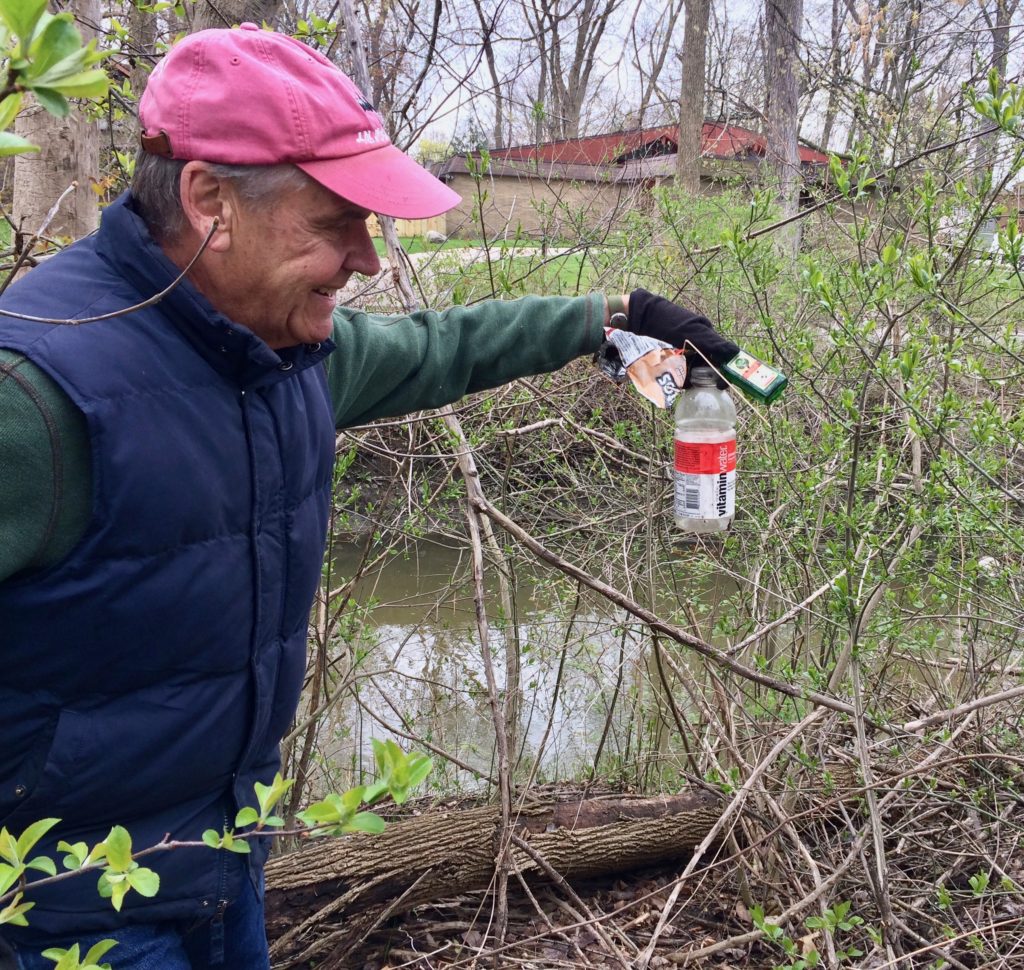
Joe Burroughs with Jaegermeister bottle (Photo by Jan Worth-Nelson)
But there’s also ceaseless dumping: liquor bottles and beer cans and yard waste and styrofoam and all manner of other junk in the stream, they say. Recently they’ve removed batteries, a leaf blower motor, garbage cans, and a yellow street blinker sign.
The garbage, along with many fallen dead trees–some from the ash borer blight of years ago–creates logjams that are not just unsightly but interrupt the creek’s flow.
So they’re issuing a call to their neighbors and others: please don’t dump in Gilkey Creek.
“It feels like it’s an abuse of nature,” Walling says. “We plead with people to stop the abuse, and we are advocating for more progress and involvement” in getting and keeping the creek cleaned up.
The Burroughs, longtime Flint residents, bought their home in 1977. Next door is Walling, mother of former Flint Mayor Dayne Walling, and across the street are Dick and Betty Ramsdell, she a Flint school board member and he a longtime educator and retired manager of the Flint Farmers’ Market.
They’ve all taken years-long loving interest in the creek, part of the Flint River watershed. It extends about 10 miles from the intersection of Grand Blanc, Atlas and Davison townships–its own watershed draining about 15 square miles. It courses under Dort Highway, through the College Cultural neighborhood, Mott Community College and ultimately to Kearsley Park, where it feeds into the Flint River.
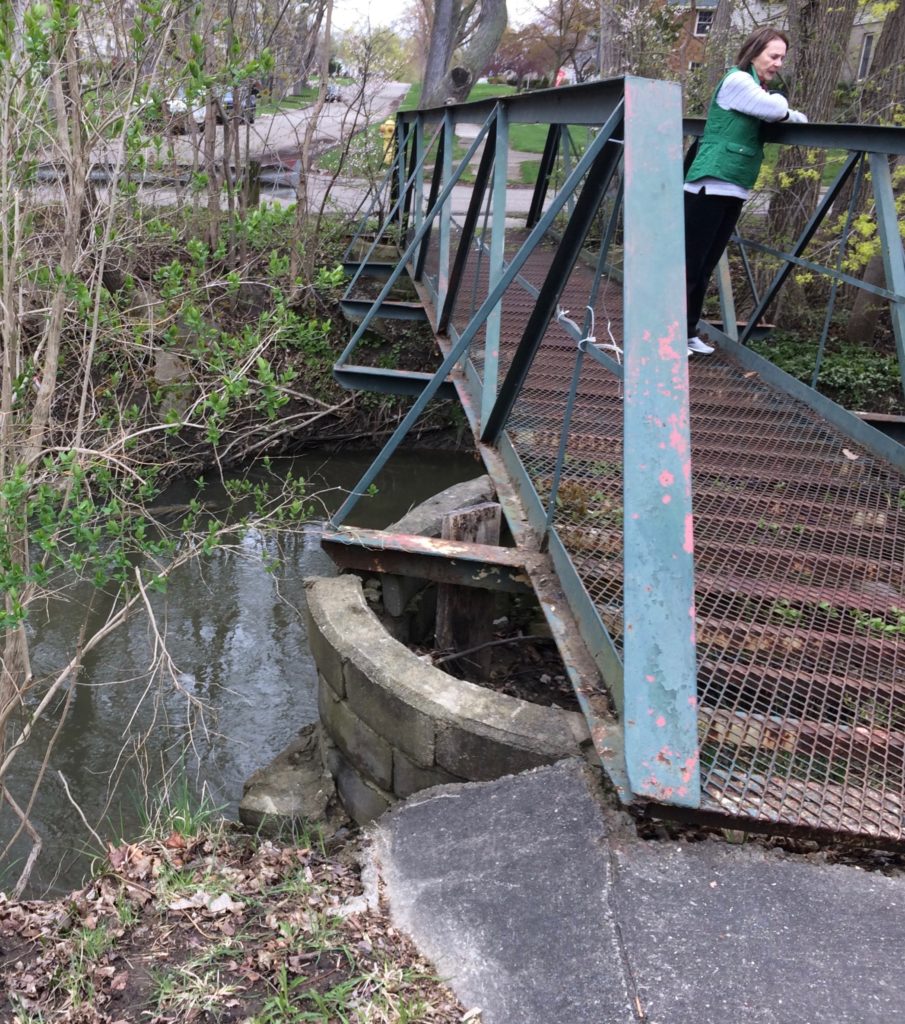
Concrete stanchions of the Kensington walkway are cracking (Photo by Jan Worth-Nelson)
At the foot of Kensington is a cast-iron pedestrian bridge across the creek, one of three in the College Cultural neighborhood. The bridge, which somebody adorned with cheerful holiday lights until the battery pack was stolen, is still walkable but in need of repair, the concrete anchors on one side cracking apart and the bridge rusty and bent.
Several neighbors along the creek have portioned out five- to ten-foot sections and attempt to keep them cleaned up. Walling and Kathryn Burroughs work together on their little patch near the pedestrian bridge.
In one hour recently, they “jam-packed” six bags of trash in less than an hour. They cut and bundle fallen branches, if they’re less than 4″ in diameter, for pickup by Republic Services, the city’s trash hauling contractor.
Local governments with jurisdiction over the creek are the City of Burton, the City of Flint and the Genesee County Drain Commission. In Flint specifically, the Water Department is in charge. Despite that the department obviously has been flooded with other priorities in the past five years, Joe Burroughs said the city has been responsive.
For the larger logs and fallen trees, the Kensington Street neighbors contacted Heather Griffin, waste services coordinator at the City of Flint. She recently walked the creek with Joe Burroughs and was very helpful, he said. She took pictures to document the most troublesome areas and also contacted Consumers Energy to remove trees threatening power lines. Matthew Potter, the city’s sewer construction foreman, appeared on the scene several days after East Village Magazine was there, coordinating the tree removal effort.
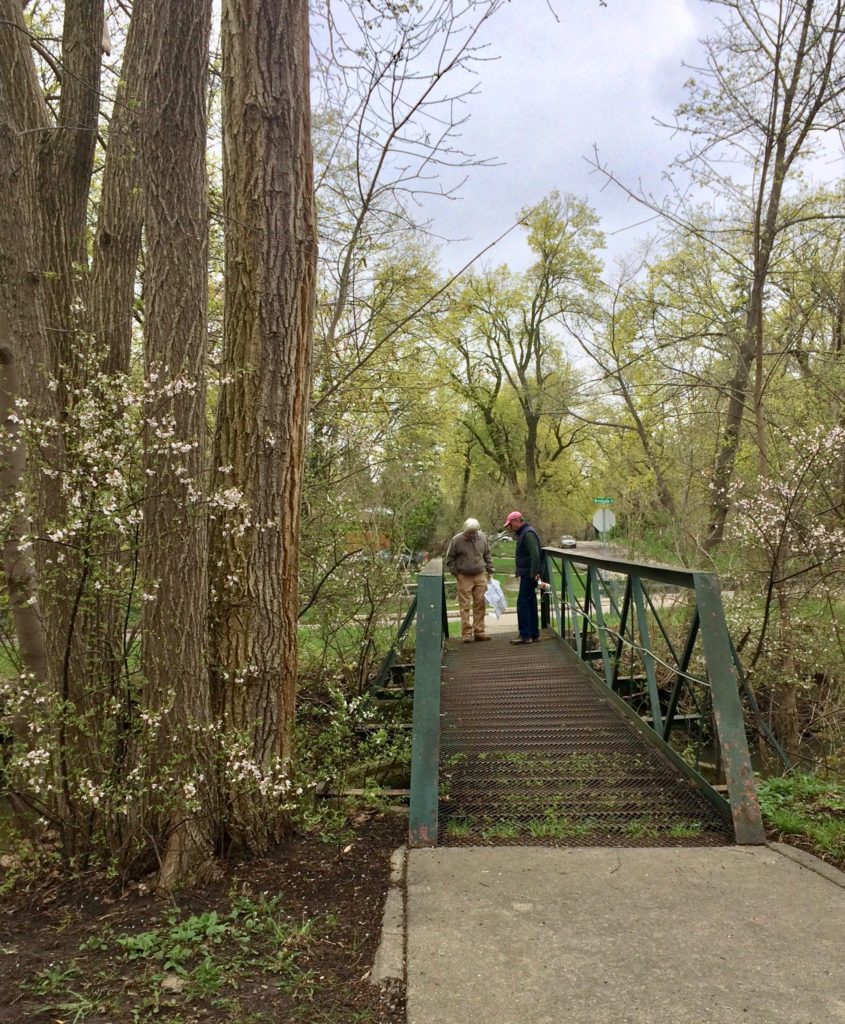
Joe Burroughs on the Kensington bridge with Tom Allen, a Kearsley Park resident who helped clean up the creek at its Kearsley Park terminus into the Flint River (Photo by Jan Worth-Nelson)
Efforts to vitalize and protect the creek also have regularly come from the Flint River Watershed Coalition, which included it in their annual “Stewardship Day” cleanup in April that attracted more than 300 volunteers, several dozen to the Kearsley Park section of the creek.
A 2009 report produced by the University of Michigan – Flint’s Office of University Outreach, with support from the Ruth Mott Foundation, examined the creek’s water quality and pollutants and called for many measures to preserve and protect the creek’s natural features and cultural resources.
Since then dramatic naturalization and “daylighting” of the creek through Mott Community College has changed the character of the waterway and helped stem periodic flooding.
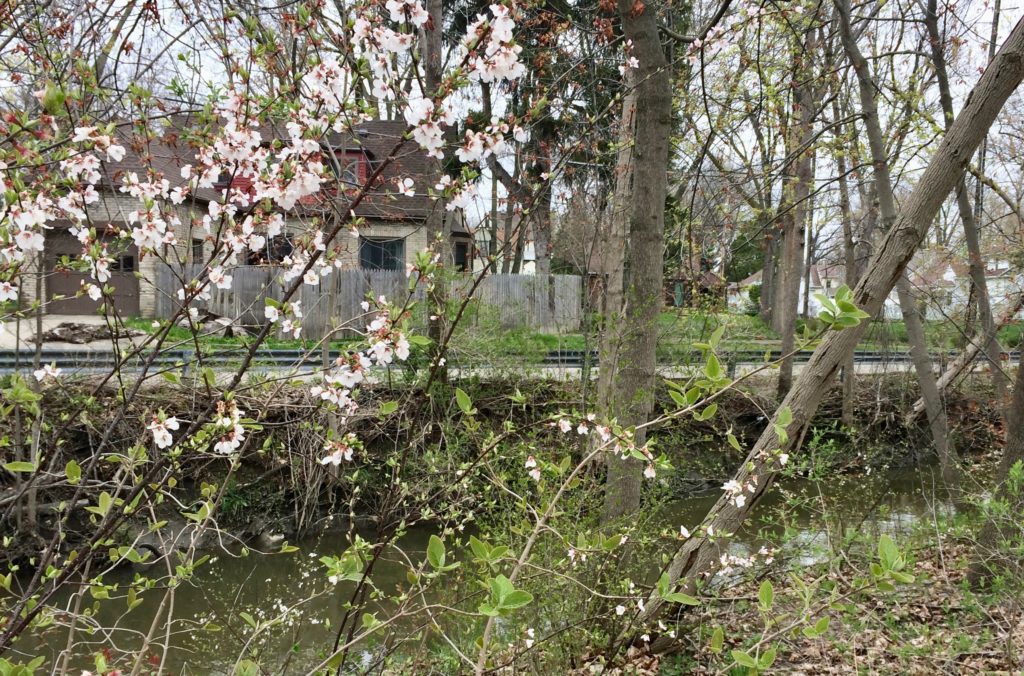
View of the creek from the east with Kensington Avenue in the background (Photo by Jan Worth-Nelson)
The challenge of keeping the creek healthy was clear in the 2009 report, since 92 percent of the creek’s watershed is developed land–requiring, the report stated, “an intensive education/outreach effort geared towards homeowners.”
At the time, identified pollution concerns were flooding and stormwater, sediment, nutrients from phosphorus and concentrations of algae, fertilizers, detergents, leaking sewers and failing septic systems.
Researchers also identified oil and grease, bacteria and toxins — along with the trash and debris the Burroughs and Walling bemoan every day.
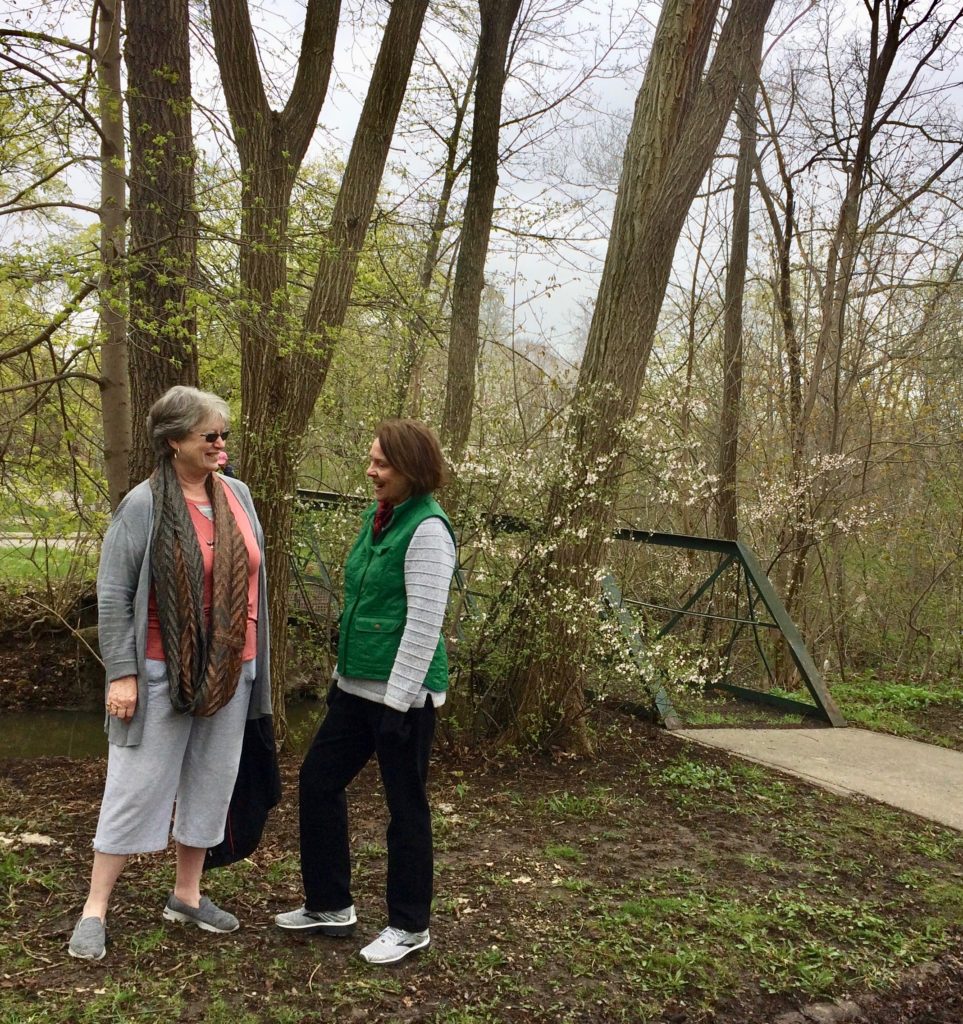
Reba Walling and Kathryn Burroughs at the patch of creek at the pedestrian bridge they maintain (Photo by Jan Worth-Nelson)
The creek also recently has been identified as a site of PFAS, polyfluoroalkyl substances, contamination. PFAS chemicals leach from many manmade products, including household products like polishes, waxes and paints.
A town hall on the PFAS issue drew a capacity crowd last month, and dumping into the creek was identified as one of the sources of trouble.
Mike Herriman, a College Cultural neighborhood activist and advocate for the creek for decades, noted that despite one county official notoriously dismissing the creek as “a drainage ditch,” its history as a known part of the Flint River watershed goes back 300 years.
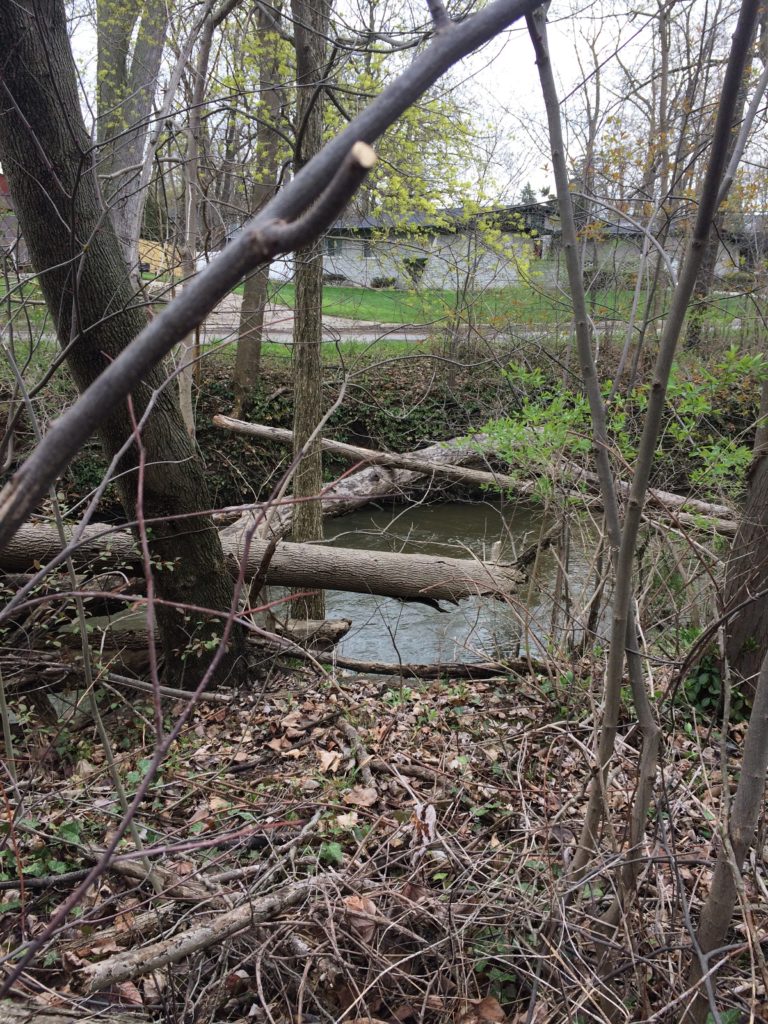
Criss-crossed and falling and rotting logs create an issue for natural creek flow (Photo by Jan Worth-Nelson)
Long known to the native population, it was given its white man’s name from Levi Gilkey, who arrived in 1831 from Genesee County, New York state, and settled near the mouth of the small stream in Burton. According to a history provided in a Gilkey Creek watershed management plan, Gilkey “left in disgust” after a series of legal disputes.
Nonetheless, he left his name behind on a humble little stream that many residents of the College Cultural neighborhood have come to cherish and wish to protect.
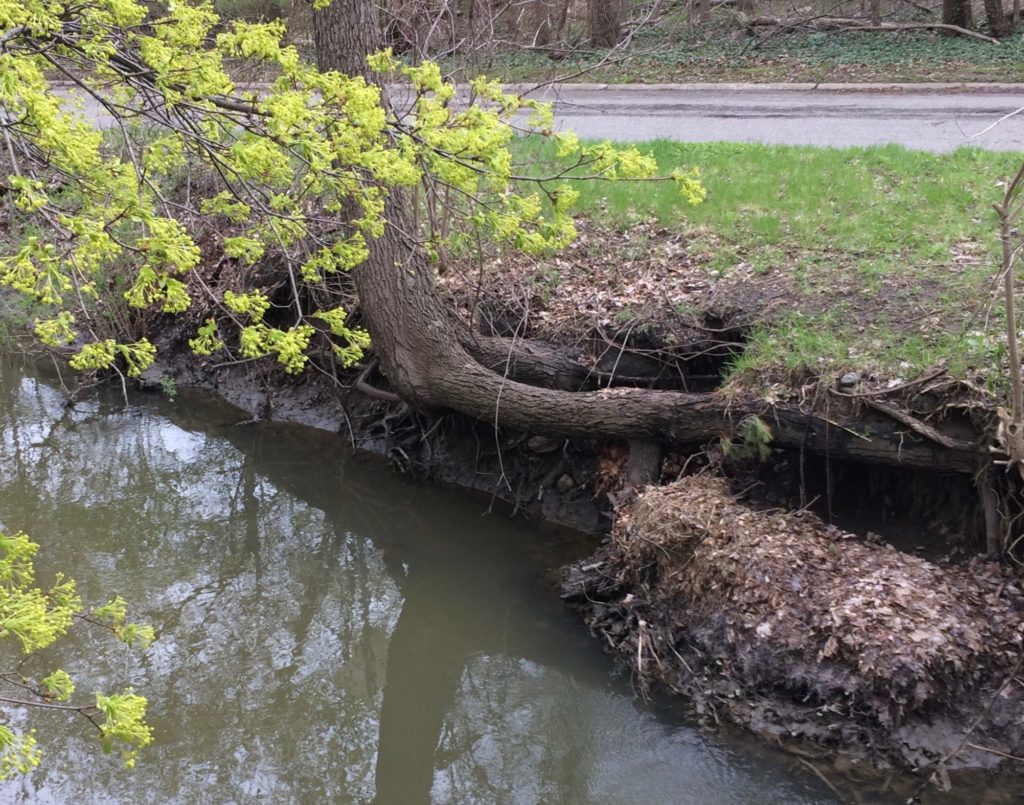
Even yard waste interferes with the creek flow, Walling and the Burroughs point out. “We have leaf pickup here, so there’s no reason to dump it in the creek,” Walling said.. (Photo by Jan Worth-Nelson)
But no matter how much the Burroughs and Walling and their “eco-altruist” neighbors clean up, the trash keeps coming. So Gilkey Creek’s advocates want more help, and are operating from the “micro-philosophy” that one by one, individual citizens can contribute to the creek’s prospects for good health.
“If each neighbor would take a section, like five feet, it would make so much difference,” Walling said. “How do you get people to understand that this is part of our city? Besides maintaining your own space, what can you do to contribute to the whole piece of nature that we have here?”
“And if you’re not going to contribute,” she says, staring woefully at a pile of creek debris, “At least please don’t add to the abuse.”
EVM Editor Jan Worth-Nelson can be reached at janworth1118@gmail.com.
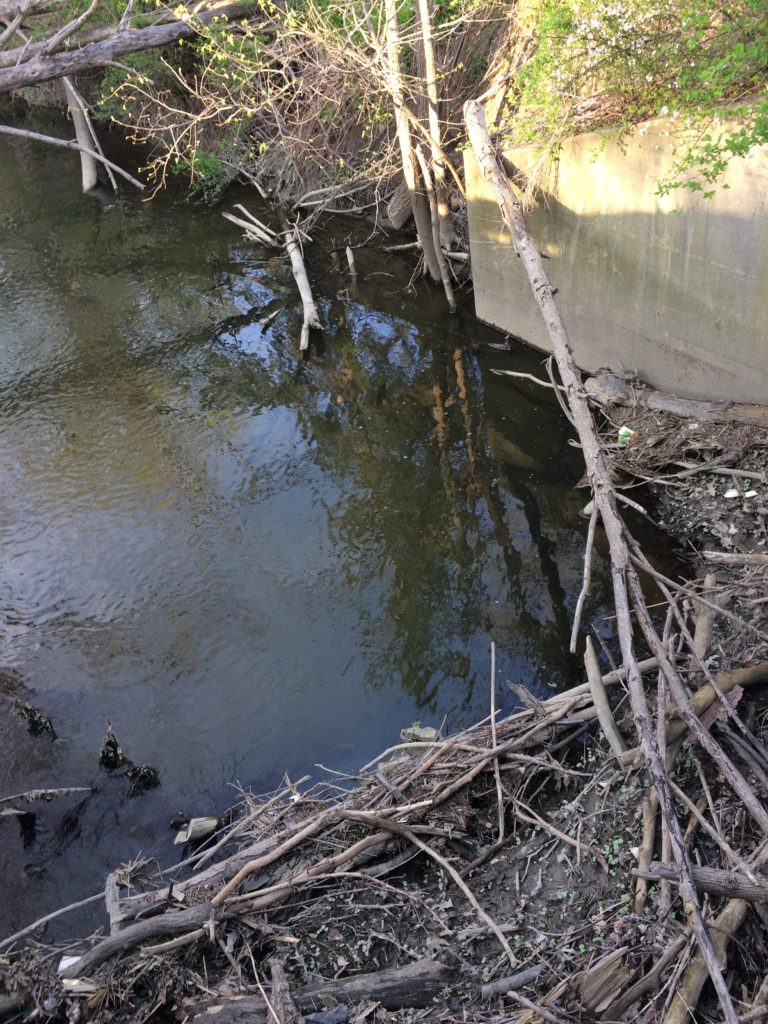
Trash blockage at Sunnyside and W. Brookside avenues (Photo by Jan Worth-Nelson)
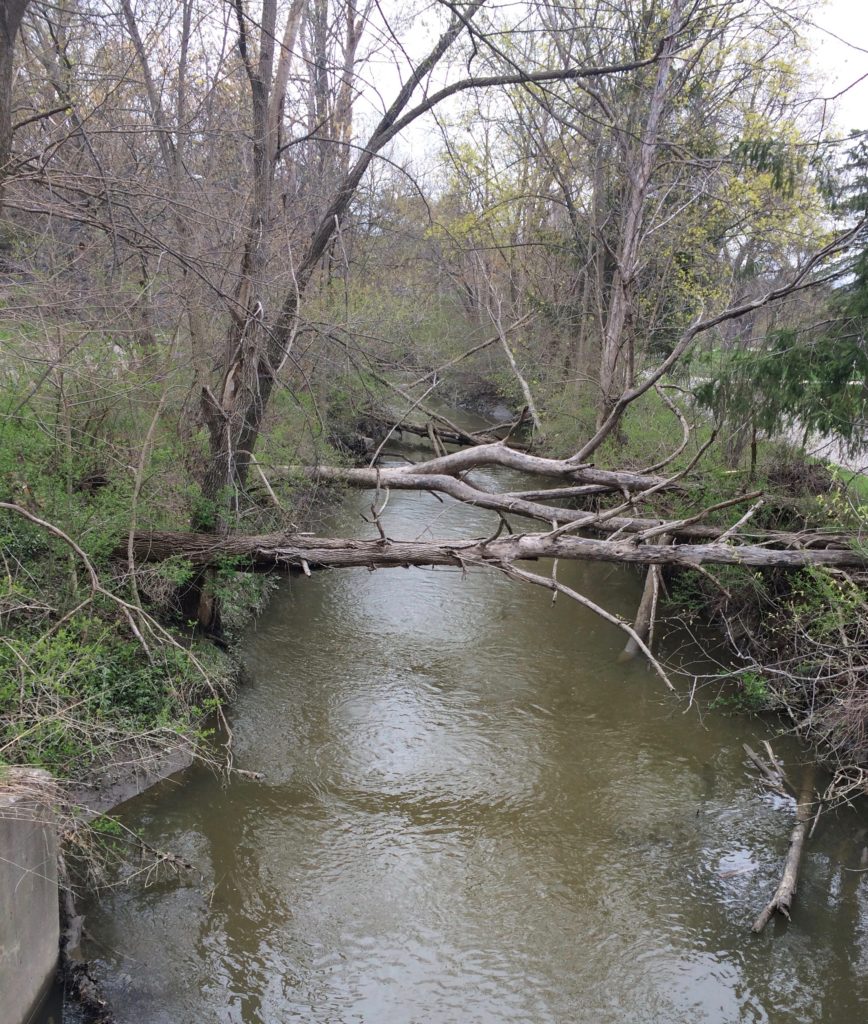
Looking north from the bridge at Brookside and Sunnyside (Photo by Jan Worth-Nelson)


You must be logged in to post a comment.